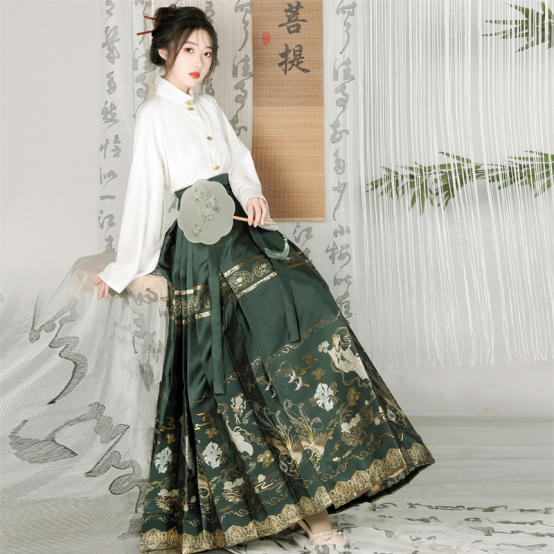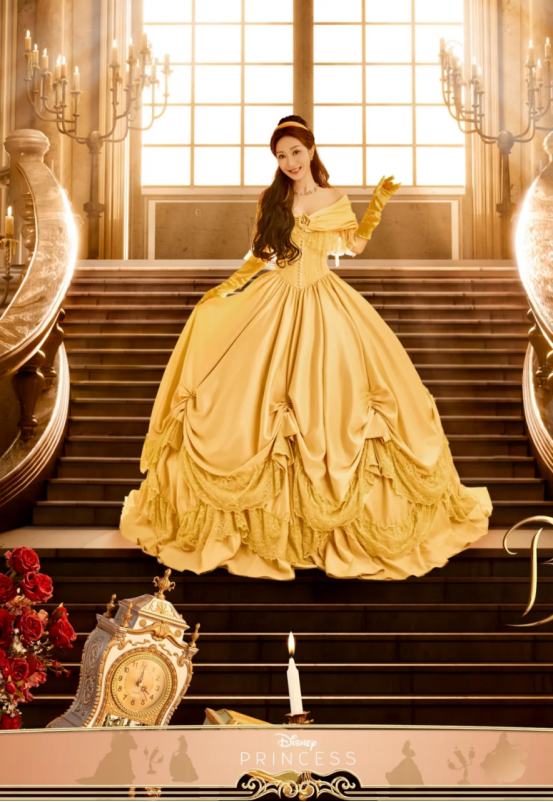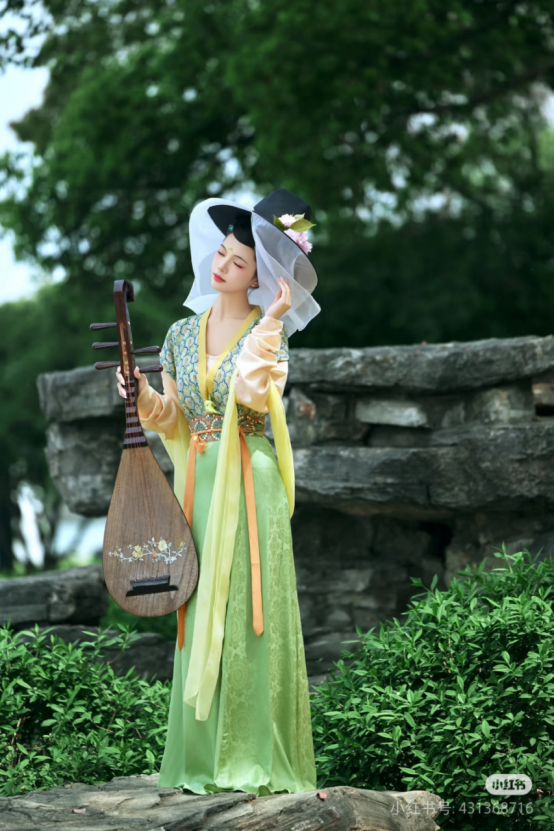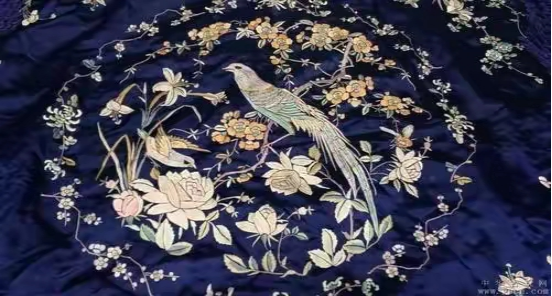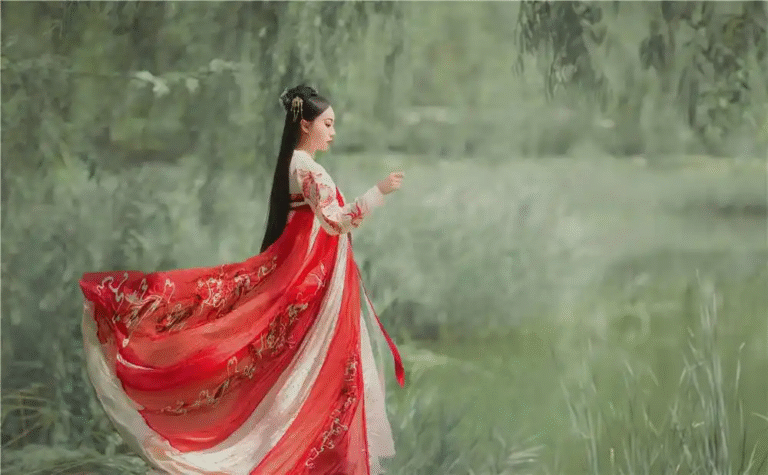If we talk about which Hanfu style has been the hottest in recent years, the Mamian skirt definitely takes the lead! Due to the general environment of cultural revival, the innovative inheritance of traditional culture, and remarkable cultural output effects, traditional costumes like the Mamian skirt are loved by many people at home and abroad. It stands out in this cultural upsurge with its unique aesthetic design and aesthetic value. So, what exactly is its charm?
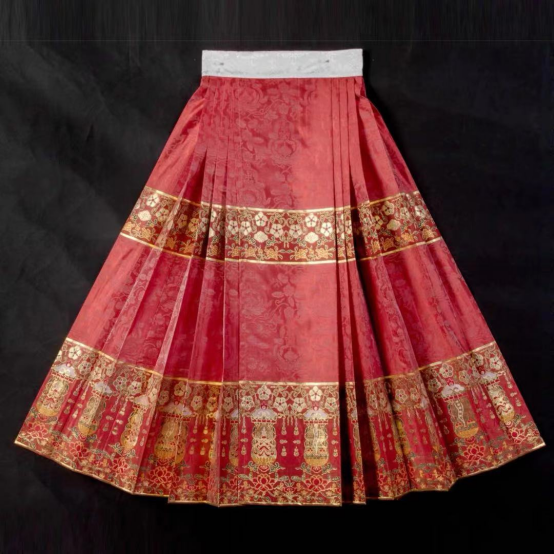
What is the style of the Mamian skirt?
The most obvious feature of the Mamian skirt is its “four skirt doors” structure: there is a pair of wide skirt doors on the front and back, which overlap each other to form the shape of the skirt. Because it resembles the “mamian” (a defensive facility of ancient city walls), and also slightly resembles the front face of a horse, it is called the “Mamian skirt”. The two sides of the skirt have dense pleats called “live pleats”, which not only facilitate walking but also make the skirt appear elegant and flowing. The skirt waist is mostly made of white cotton cloth, fixed by laces or buttons. The overall shape of the skirt is a trapezoid that is narrow at the top and wide at the bottom. When unfolded, it is like a fan. The more pleats there are, the larger the arc when swinging, showing an excellent geometric beauty!
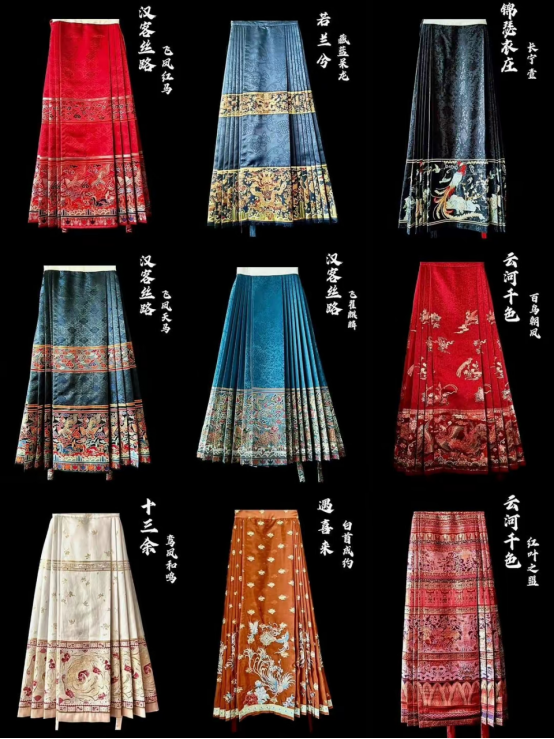
The history of the Mamian skirt
The history of the Mamian skirt can be traced back to the Song Dynasty. At that time, in order to facilitate women to mount horses and ride donkeys, they designed the “Xuan skirt”, which was formed by two independent skirt pieces with front and back slits. In the Ming and Qing Dynasties, after absorbing the characteristics of nomadic people’s clothing, the Mamian skirt officially appeared and was loved by everyone from queens and nobles to ordinary people. During the Republic of China, influenced by Western culture, the Mamian skirt was gradually simplified. In recent years, with the revival of Hanfu and cultural confidence, it has even appeared on fashion weeks, being called the “magical Oriental clothing” and becoming a representative of “new Chinese-style.
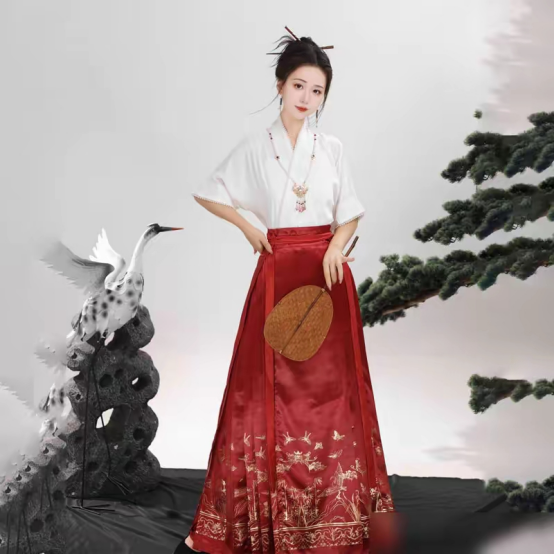
The fabric of the Mamian skirt
The material of the Mamian skirt is very particular. In ancient times, nobles mostly used high-end fabrics such as brocade and flowered satin, with extremely complex craftsmanship; ordinary people used common fabrics. Now, to meet different needs, the materials are more diverse, and silk and chemical textile fabrics are commonly used, which not only ensure quality but also balance beauty and comfort.
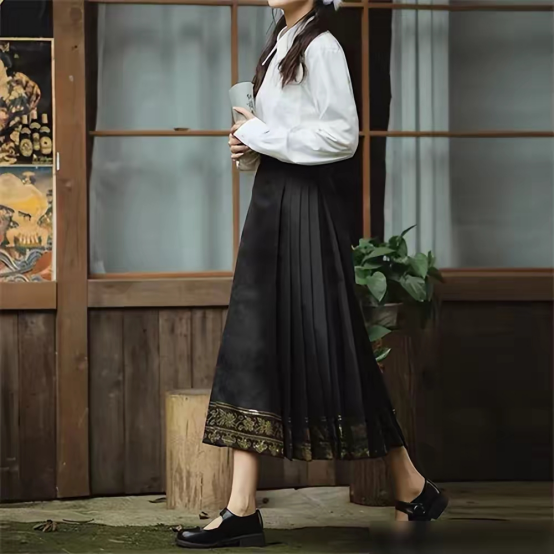
The colors and patterns of the Mamian skirt
The colors and patterns of the Mamian skirt are like a “history book worn on the body”! Red represents festivity, blue looks elegant, and purple symbolizes wealth. Each color has a special meaning. The patterns are mostly peonies, chrysanthemums, dragons and phoenixes, unicorns, sea water and river cliff patterns, etc., and each has cultural connotations. For example, the dragon and phoenix pattern implies good luck, and the sea water and river cliff pattern symbolizes the stability of the country, weaving the wearer’s wishes into the stitches.
Today, the Mamian skirt has become a “living fossil” of Chinese clothing with its unique structure, exquisite craftsmanship, and profound cultural connotations. It is not just a beautiful piece of clothing but also a microcosm of thousands of years of life and values. The beauty of the Mamian skirt is precisely a wonderful chapter of the Chinese civilization!

